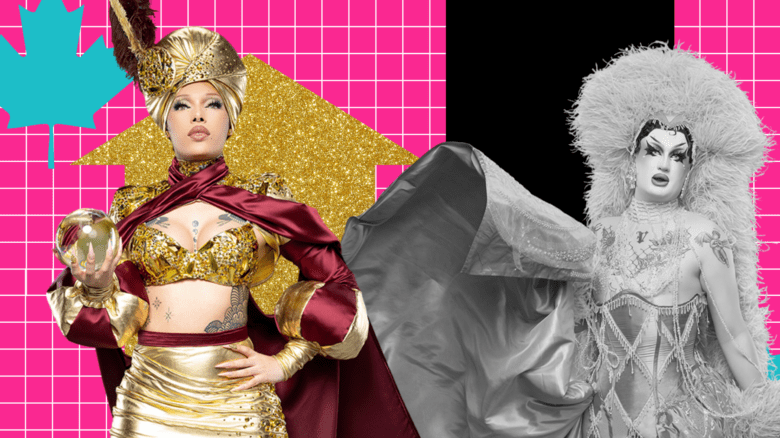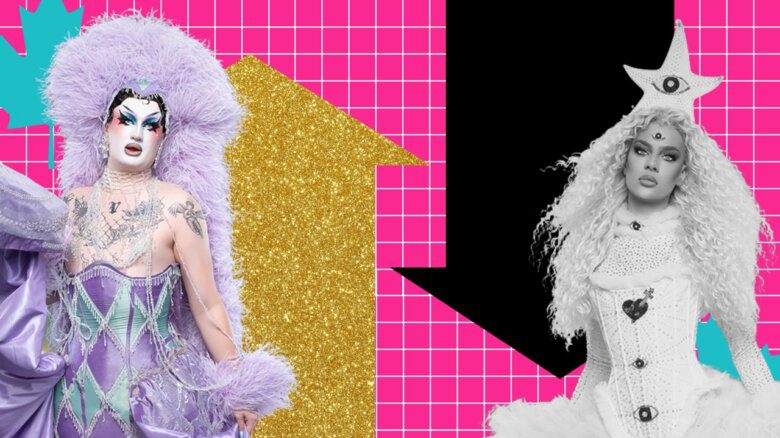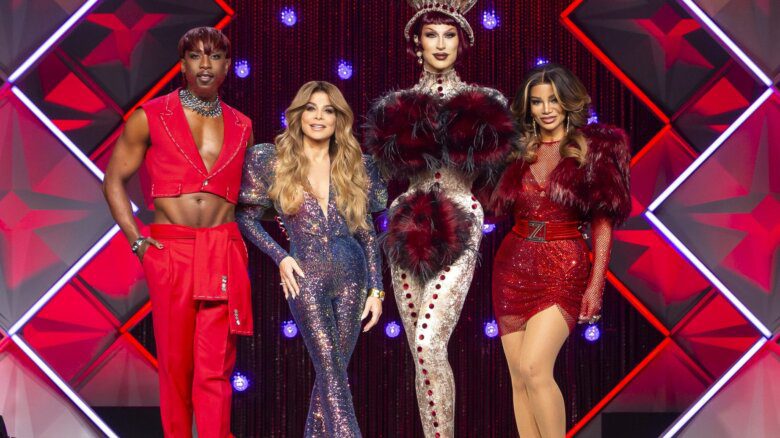Suffice it to say there were some initial hesitations in the fandom about the RuPaul’s Drag Race All Stars 10 “Tournament of All Stars” format. Even with an understanding of all the reasons why such a format needed to be instituted to keep All Stars alive, there were still concerns that the “bracketed” season would be too confusing to follow—and worse, that it would deprive us of enough time with the various queens cast.
That latter concern was especially notable, as some queens that fans have been dying to see for seasons on the cast (Denali! Acid Betty! Nicole Paige Brooks From Atlanta Georgia!) would be reduced down to maybe just three aired episodes. At max, a queen would only get six episodes total—just half of what all the All Stars 9 queens were guaranteed.
But it is with great relief that, after the first bracket has come to an end, I can call this format a tremendous success in my eyes. While the first three episodes haven’t been perfect, they’ve been the freshest, liveliest episodes of All Stars since the double Snatch Game on All Stars 7—maybe even since the Silky Nutmeg Ganache Lip Sync Power Hour on All Stars 6. This tournament-style season has revitalized All Stars, allowing producers to tell smaller stories, giving the queens the chance to present a tight, polished runway package and keeping us excited about seeing the queens moving onto the merge portion of the season when we get there.
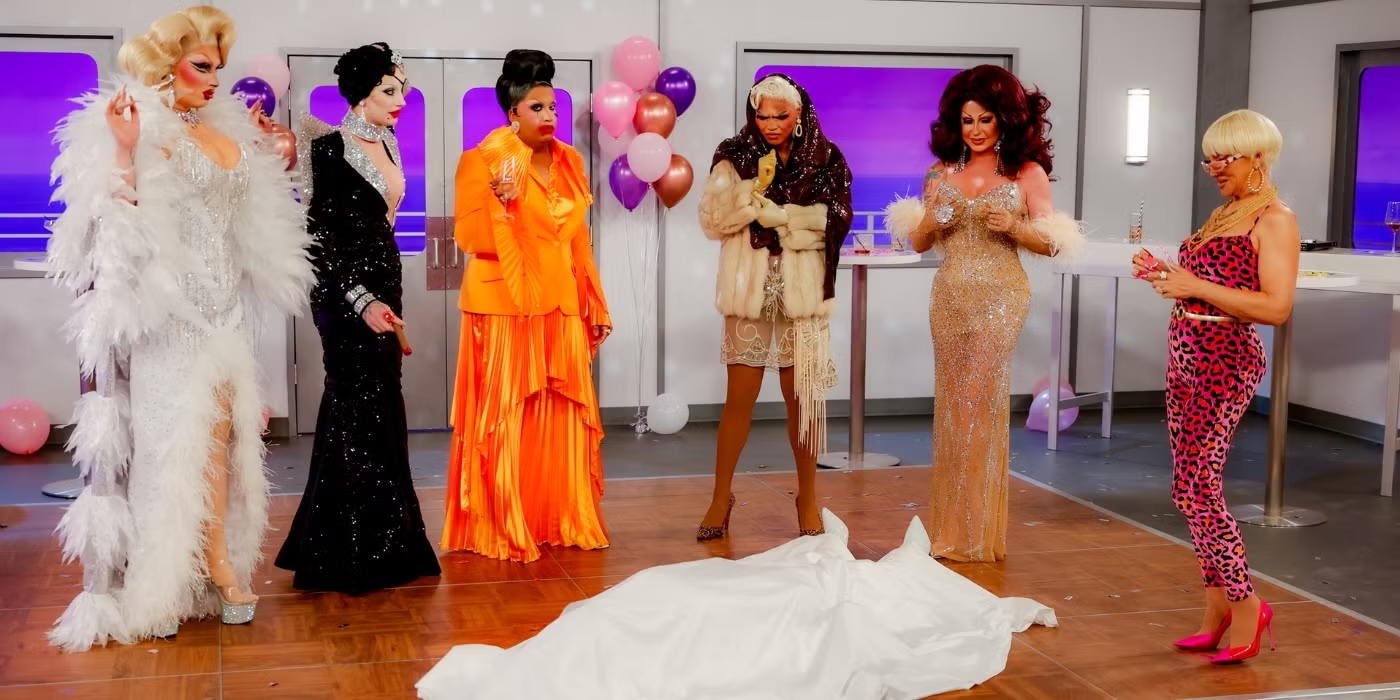
The “orange bracket” queens competed in three challenges, including improv task “Murder on the Dance Floor” Credit: Courtesy MTV
The “orange bracket,” nicknamed such for their assigned colour in the season’s promo shoot, was cast much like the other two were: one OG legend in Season 3’s Phoenix, one former finalist in Season 14’s Bosco, a complementary Season 14 queen in DeJa Skye, a Season 13 threat in Olivia Lux, an early-out underdog in Season 15’s Irene the Alien and a returning All Star in Season 9 and All Stars 3’s Aja. I give the show immense credit for balancing the brackets: looking at the cast as a whole, it’s too Season 14-heavy and has too many returners. But looked at individually, each feels more evenly distributed.
Right out the gate, you could see the storylines this portion of the cast would provide: Bosco and Irene are drag sisters, while Aja and Olivia are part of the same ballroom house. (As Olivia reminded us often with her calls of “Mikaye! Mugler!” God, I miss Legendary.) Irene was a Porkchop queen who many thought had too much potential to go home first—including Irene herself. DeJa went through a life-threatening body transformation that you can tell she’s still getting used to. Bosco has transitioned since her season aired, and you can tell she’s very used to her transformation. Phoenix went home early in a season that aired a decade and a half ago, and is unfamiliar with modern Drag Race standards. Throw in a heaping helping of strategy around the season’s new points system, and you’ve got a recipe for mess or success, and perhaps both.
About that points system: we’ve seen Drag Race implement various attempts at “scores” in the last several All Stars seasons, from Legendary Legend Stars to Beautiful Benefactress Badges. I would argue none of them has worked, largely because they were too static (one badge for one win, assuming you’re not blocked) until they were suddenly too dynamic (three badges for the talent show win?!). This go-around, Ru got it right, with a lot of strategy at play regarding the points. Yes, the top two in the challenge each still get points for their victory, but they get two each, with a third point going to the winner of the Lip Sync for Your Legacy. Then, the four non-winning queens each get a Most Valuable Queen (MVQ) point that they have to give away—and they can give it to anyone but themselves.
The strategic possibilities here are a veritable bounty. They reward playing a social game to earn more points, finally making the “alliances” that have never really paid off on All Stars relevant to the game at hand. While the first point ceremony is a bit of a dud, with all the non-winning queens simply trading MVQ points, the very next one is spicier: Olivia denies her ballroom sister Aja a point to instead reward her “Melanation Station” ally DeJa, which both keeps Olivia in the race to make the semifinals and causes genuine drama between her and Aja. Every reality competition TV twist should accomplish both of these things: keep the viewer guessing about what might happen, and add tension to the story.
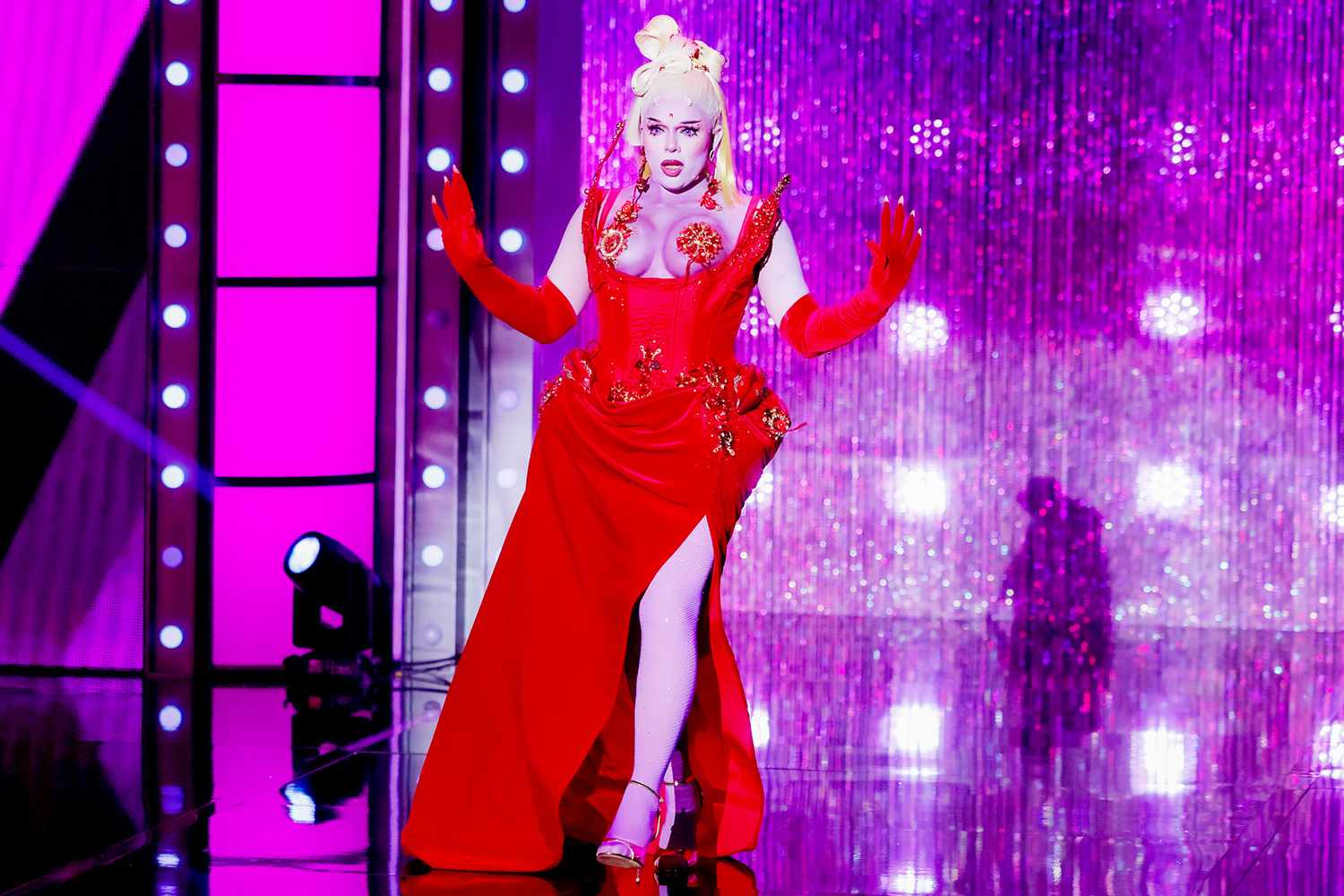
Aja took Pokémon inspiration for some of her looks, including being inspired by Generation I fave Jynx Credit: Courtesy MTV
Speaking of meaningful narrative tension, we’re actually getting some this season! While there was plenty of drama in All Stars 9 around the Ruby Snippers, none of it actually meant anything, as no one was effectively blocked all season. And all the tension in All Stars 8 did was threaten the whole season, as Heidi N Closet quit and other queens threatened to follow her out the door. (What a miserable season of television.) This go-around, we see the effects of both the points system—in how Olivia and Aja got tense with each other in Episode 3—and just what it means to come back and have to prove yourself on such an abbreviated timetable. That led Olivia to snipe at Bosco in Episode 2, determined to not play the sweet girl this time and stand up for herself against any slight. (No matter how imagined that slight might be.)
Put simply, these episodes were exciting to watch. They kept us invested in the outcome and rewarded us for investing in storylines. Sure, if you look at the three queens moving onto the merge, it may be obvious: Aja, Bosco and Irene were the only ones to win challenges. But Aja got in there by the skin of her teeth thanks to effectively playing her relationship with Olivia right, as the latter felt compelled by their sisterly bond to reward her with her final MVQ point. This put Phoenix in position to break the three-way tie between Aja, DeJa and Olivia in Aja’s favour, rewarding her for her strong performance in the premiere. Meanwhile, though Bosco dominated the edit, it was Irene who stormed the challenges in this bracket. She placed in the top two for every single one—deservedly in every case!—and secured her first lip sync win in the last episode. If anyone is exiting this bracket with real momentum, it’s her.
I myself am most excited by Bosco after this trio of episodes, though. She has come so far from Season 14, where she technically performed well (tying Lady Camden for most challenge wins in that season with three), but also presented a very limited runway package and suffered the indignity of losing three lip syncs in just two episodes. Never forget Jorgeous’ iconic declaration that Bosco was “in the bottom three times in one episode.” Were Bosco not the recipient of the golden chocolate bar, that season’s immunity trinket, she would have been eliminated in seventh place, two episodes short of making the finale.
This go-around, she is performing at another level. Her confidence in her new skin—and with her new face, she’s proud to declare—is contagious. The way Ru delights in both her banter and her unashamed sexuality (those breasts!) is so fun to watch. Her comedic timing in the “Murder on the Dance Floor” maxi-challenge was tremendous, as was her commanding performance in that episode’s lip sync. If I was a bit of a Bosco skeptic in Season 14, consider me a true believer now.
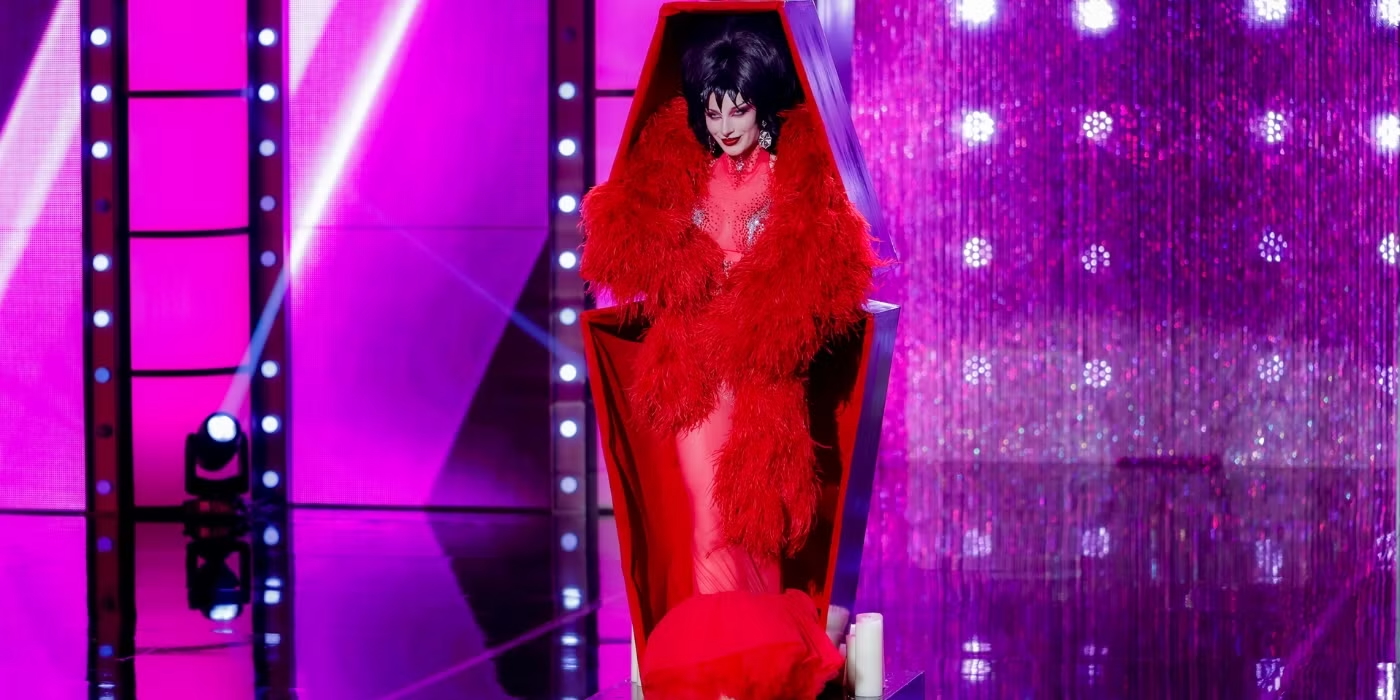
Bosco’s Elvira-in-a-coffin look was one of the runway highlights of the first Tournament of All Stars bracket Credit: Courtesy MTV
Bosco will have to compete not only with Aja and Irene in the semifinals, but with six other queens as well. And even if she can make it to the finale, she’ll need to win out in a LaLaPaRuZa battle—something she infamously struggled with in Season 14. So she’s got a long road ahead of her yet, as do her fellow orange bracket victors. But even if none of them ultimately wins it all, this format gives them the aura of success. They won out across performance, comedy and presentation challenges, leveraging not just their drag prowess, but their social games as well. Whatever happens next, they have conquered the first hurdle in style.
Whither those queens who didn’t advance? I could see this being the one remaining sticking point for viewers: it does suck to see three queens’ runs all end at once. Especially when that group includes a queen like Phoenix, who has been waiting for quite some time for her return to the show. But the harsh truth is that, while it was delightful to see Phoenix back again, and I’m glad we got to spend three episodes with her, she also demonstrated in those three episodes that she’s not quite ready for Drag Race again. This is the truth of any competition, and what Drag Race perhaps got a little too afraid to tell its audience in recent years: people won’t meet the threshold required to advance, and they will have to go home. If anything, this format gives us a lot more time than we would have with some of them on a traditional elimination season, reintroducing them to the audience in a contained, enjoyable way.
And there’s always future All Stars seasons to consider! If anything, this supersized cast of 18 gives the impression that Drag Race might start casting the way its Paramount corporate sister series, The Challenge, does. Bringing back someone who’s done three seasons, including two All Stars runs and two finales, in Ginger Minj? Why not? Jorgeous returning immediately after her last All Stars season? Sure! There’s a future on Drag Race for queens like DeJa and Olivia, should they want to play the game again. And with fewer episodes to prepare for, it’s a lot easier to dive back in than it has been in the past.
But for now, I’m most excited about what’s to come in these next two brackets. The pink bracket promises high drama with queens like Mistress Isabelle Brooks in the mix, while the purple bracket will see Ginger fighting to accomplish what she hasn’t been able to in the last three seasons: earning a crown. There are plenty more stories to tell, and this format is conducive to doing so. By the time this season ends, if World of Wonder has done their job properly, we will have taken multiple journeys to reach one point—and that point has, hopefully, a great chance to be a satisfying conclusion.
After the first part of this season, I’m ready to praise the show for taking a swing and trying something different. But let’s see how the pink bracket goes first.
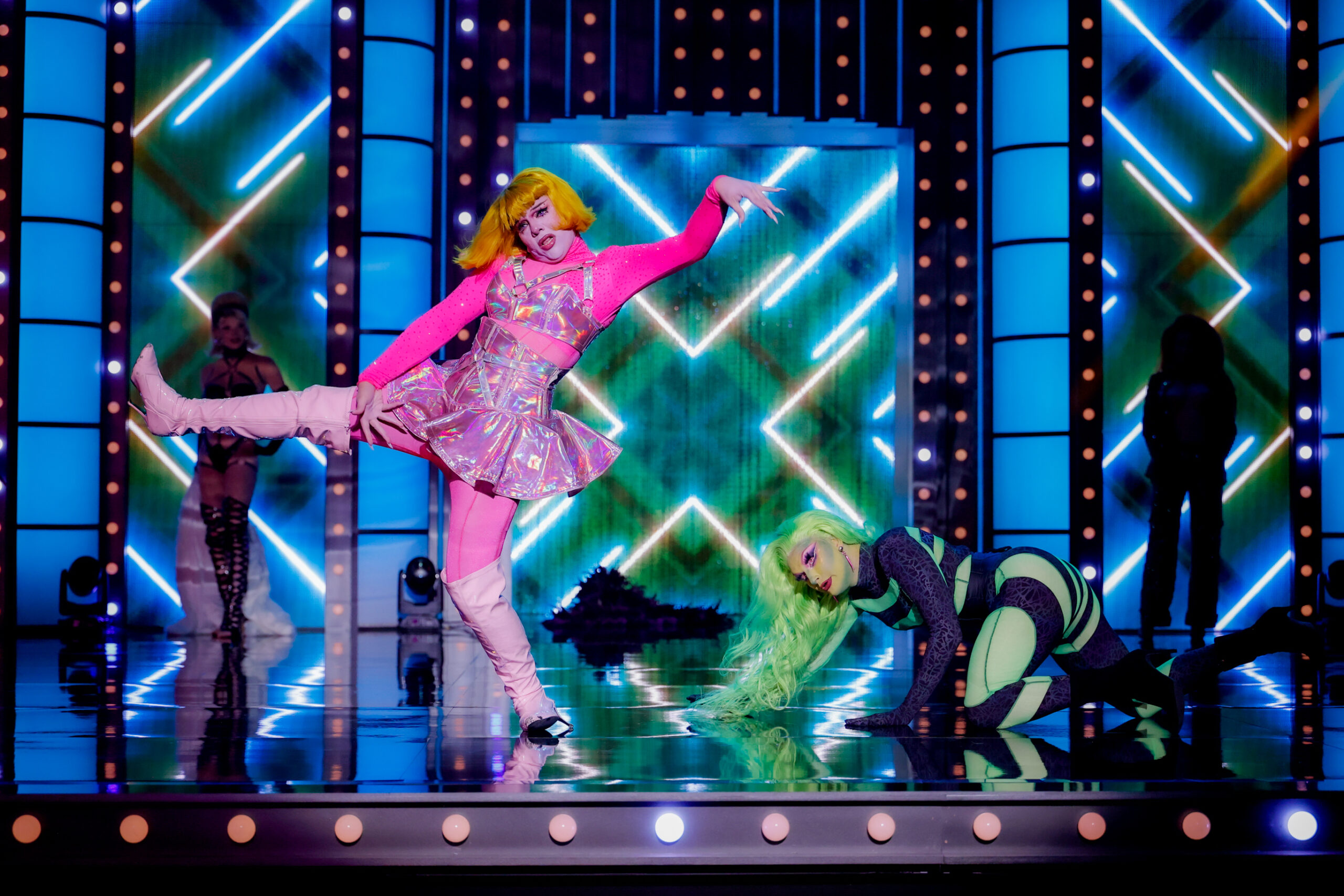
 Why you can trust Xtra
Why you can trust Xtra